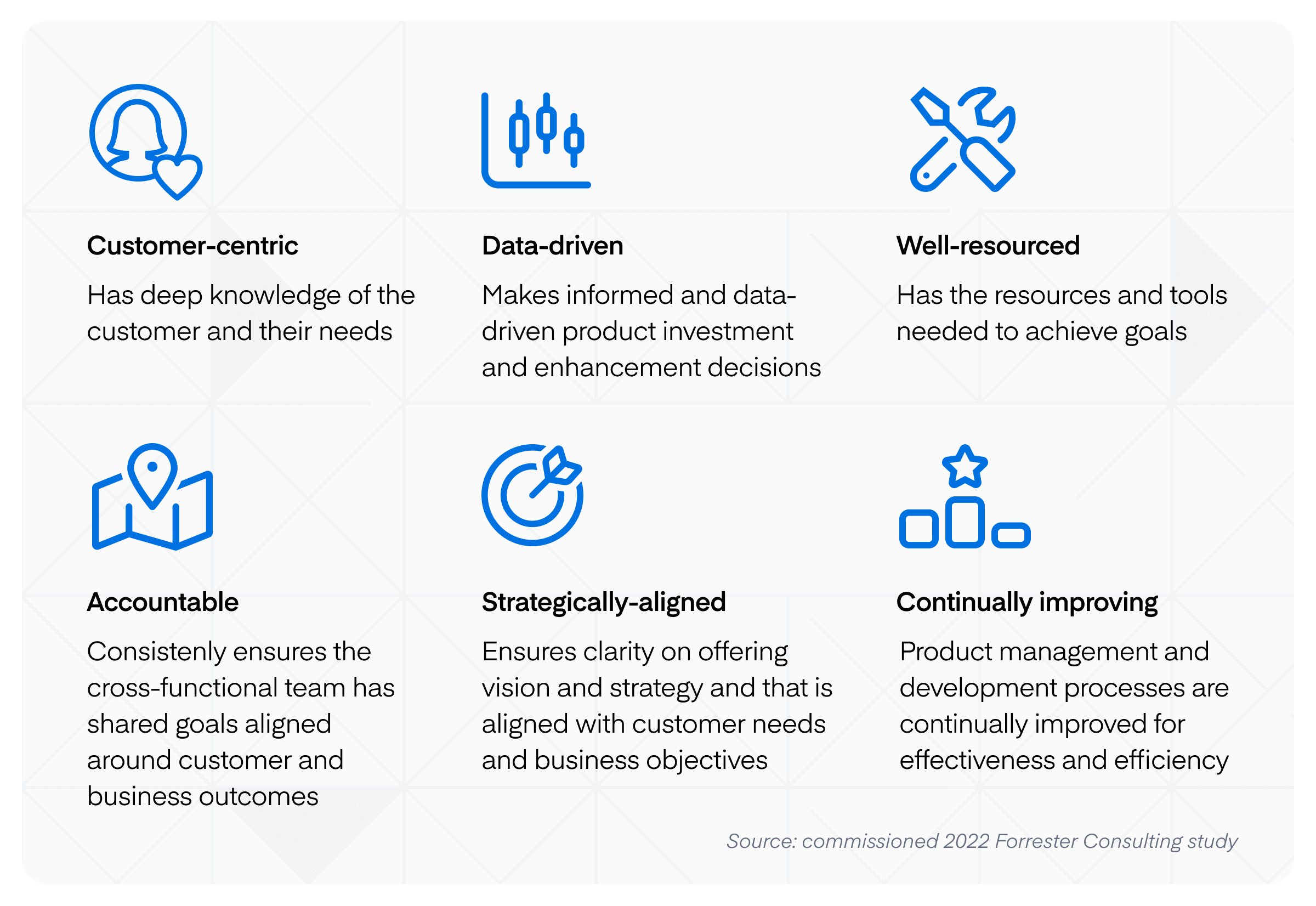Introducing Productboard Pulse. Exec-level insights into what your customers need, powered by AI.
Learn more
Productboard recently commissioned Forrester Consulting to conduct a new study, The Business Impact Of Investing In Product Management, that provides a deep analysis of the relationship between investing in product management and the performance improvements that makes possible – a crucial equation in an increasingly uncertain environment.
The full study, available here, discusses how highly-effective product management functions can unlock performance and drive business growth. Here we explore the key factors that drive success.

It might seem obvious, but a key factor to success is customer-centricity. Many teams might assume they’re more customer-centric than they actually are – only 12% of respondents in our 2022 Product Excellence Report said they successfully capture insights and feedback from all available customer sources.
And only 14% effectively categorize customer feedback to inform prioritization. In short, that means they’re not capturing feedback, listening to it, or incorporating that feedback into planning and prioritization, making it difficult to be a customer-centric product organization.
Strategic alignment ensures clarity on vision and strategy, putting the whole organization on the same page when it comes to a product-lead culture. Every team should know what the roadmap looks like, what it will take to get there and how their specific work will contribute to not only the roadmap but larger organizational goals. Everything ultimately should align with customer needs and business objectives.
Too many product teams make decisions based on hunches instead of data. The most successful teams make informed, data-driven product investment and enhancement decisions. That data comes from customer feedback, product usage and performance, and so much more. One of the best things leaders can do for their product teams is invest in tools that will give them the data they need to make the smartest decisions.
It’s not enough to have a cross-functional team with shared goals around customer and business outcomes; that team and everyone they work with cross-functionally need to be held accountable for their work in moving toward those goals.
It’s not about punishing those who fall short, but taking a closer look at processes and gaps in workflows that can be addressed, further setting teams up for success. That’s where continuous improvement comes in.
Regular evaluation of processes, workflows, tools and more are necessary to continually improve effectiveness and efficiency both for product managers and for the other teams they work with across the organization.
Finally, it makes sense that the most successful product teams have the best resources available to them – the resources and tools needed to achieve the goals they have laid out and agreed on with leadership.
Learn more about why investing in product teams pays off.
